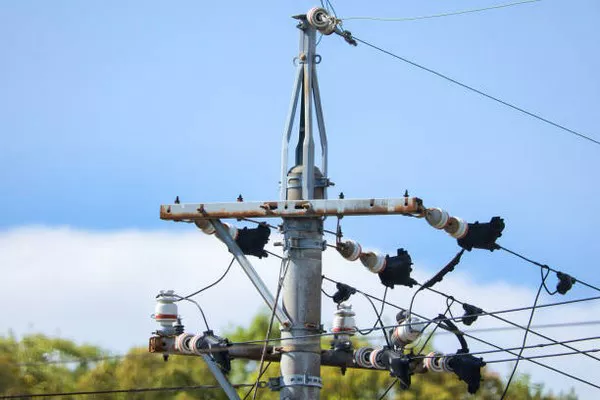Electrical transformers are integral components of modern power distribution systems, facilitating the efficient transfer of electrical energy from one voltage level to another. While their significance is undeniable, the appearance and function of transformers often remain shrouded in mystery for those outside the realm of electrical engineering. In this article, we embark on a visual journey to demystify electrical transformers, examining their external features, internal components, and the vital role they play in powering our world.
The External Anatomy of an Electrical Transformer
At its core, an electrical transformer is a device designed to alter the voltage of alternating current (AC) electricity. While the internal mechanisms are intricate, the external appearance of a transformer provides important insights into its design and purpose. Here’s what you can expect when you encounter an electrical transformer:
Enclosure and Housing:
Transformers are usually housed within protective enclosures that shield their internal components from environmental factors such as moisture, dust, and temperature fluctuations. The enclosures are constructed from materials that provide insulation and structural integrity.
Cooling Systems:
Larger transformers are often equipped with cooling systems to dissipate the heat generated during operation. These cooling systems can take the form of cooling fans, radiators, or heat exchangers. Their presence is indicated by cooling fins or panels on the transformer’s surface.
Insulators:
Transformers rely on insulating materials to prevent electrical leakage and ensure safe operation. These insulators are often visible as bushings or connectors protruding from the transformer’s surface.
Labels and Markings:
Transformers are labeled with important information, including their manufacturer, capacity (measured in kilovolt-amperes or kVA), primary and secondary voltage ratings, and serial number. These markings are crucial for identification, maintenance, and operational purposes.
High-Voltage and Low-Voltage Terminals:
Transformers have terminals through which they connect to power lines. High-voltage terminals receive the input power, while low-voltage terminals deliver the transformed output power. The number of terminals corresponds to the transformer’s winding configuration.
The Internal Components of an Electrical Transformer
While the external features of a transformer offer valuable insights, it’s the intricate internal components that truly define its function. Here’s a glimpse into what lies within the enclosure:
Core: The core is the heart of the transformer, usually made from layers of thin, high-grade steel laminations. These laminations reduce energy losses through eddy currents and hysteresis, enhancing the transformer’s efficiency.
Windings: Windings consist of insulated copper or aluminum wires wound around the core. Primary windings receive the input voltage, while secondary windings produce the transformed output voltage. The ratio of the number of turns in the primary and secondary windings determines the voltage transformation.
Insulation: Insulating materials, such as varnish or paper, are used to separate the windings and prevent electrical contact between them. This insulation ensures safety and prevents short circuits.
Tap Changer: Some transformers are equipped with a tap changer—a mechanism that allows the adjustment of the winding turns ratio. This enables small changes in the output voltage to account for variations in the input voltage or load conditions.
Tank: The tank serves as the outer shell of the transformer, containing the core, windings, and insulating materials. The tank is often filled with insulating oil that provides cooling and insulation for the internal components.
The Role of Electrical Transformers
Transformers are not merely visually intriguing; they also play a pivotal role in modern electrical systems:
Voltage Transformation: The primary function of a transformer is to change the voltage level of electrical energy. This transformation is essential for transmitting electricity over long distances with reduced energy losses.
Power Distribution: Transformers are central to power distribution networks. High-voltage power generated at plants is transformed to lower voltages suitable for residential, commercial, and industrial consumption before being distributed through power lines.
Isolation: Transformers provide electrical isolation between the primary and secondary circuits. This isolation ensures safety by preventing direct contact between different voltage levels.
Voltage Regulation: Transformers equipped with tap changers can adjust output voltage levels to maintain a steady supply to consumers, compensating for fluctuations in input voltage.
FAQs about Electrical Transformers
Q: Can you explain the concept of “turns ratio” in transformers?
A: The turns ratio is the ratio of the number of turns in the primary winding to the number of turns in the secondary winding. It determines how much the input voltage will be transformed into the output voltage.
Q: Why are transformers often filled with oil?
A: The oil in transformers serves multiple purposes. It acts as an insulating material, provides cooling, and aids in transferring heat away from the core and windings. Additionally, the oil helps protect the internal components from moisture and oxidation.
Q: What are the different types of cooling methods used in transformers?
A: Transformers can be cooled through various methods, including natural convection, forced air cooling using fans, and liquid cooling through radiators or heat exchangers. The choice of cooling method depends on the transformer’s size, capacity, and operational requirements.
Q: Are there alternatives to traditional oil-filled transformers?
A: Yes, dry-type transformers are an alternative to oil-filled transformers. They use air or solid insulation instead of liquid oil, making them suitable for indoor applications where the risk of oil leakage is a concern.
Q: Can transformers operate without a core?
A: While a core is a critical component of most transformers, some specialized transformers, such as air-core transformers, can operate without a solid core. These transformers are often used in high-frequency applications.
Conclusion
Electrical transformers stand as silent sentinels in the world of power distribution, playing a vital role in ensuring the seamless flow of electrical energy to homes, businesses, and industries. Through a closer look at their external features, internal components, and essential functions, we gain a deeper appreciation for these unassuming yet crucial devices that power our modern lives. As transformers continue to evolve and adapt to changing energy needs, their influence on the way we harness and distribute electricity remains undeniably significant.

